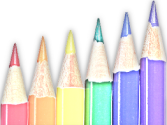How Things Fly
Overview
The flight of modern aircraft utilizes forces that are studied by
eighth grade students as part of the physical science curriculum.
While these forces are usually studied in a “stand alone”
mode, the problem of “How Things Fly” integrates the
interplay among these forces into a more meaningful context. Each
student, in groups of four, will identify one of the four major
forces involved with flight - Lift, Weight, Thrust or Drag - and
create a Slideshow page illustrating that force along with an
explanation of its importance to flight. Students will access
research materials for this project through the Smithsonian
Institution’s National Air and Space Museum’s (NASM)
website and its links to other relevant Internet URLs.
Concepts
- Students will develop research skills in accessing information from the Internet.
- Students will integrate their understanding of a particular force into a larger team effort which explains how the four forces affect flight.
- Students will use their understanding of balanced, unbalanced and net forces to explain the fundamental principles which enable airplanes to fly.
- Students will create a Slideshow presentation that will
instruct other students on the forces that permit flight.
Indicators
- Students will demonstrate their research skills by submitting at least one page of notes. They will also document the Internet sights they visited and cite other sources they used in a bibliography.
- Each students will create at least one page in a Slideshow representing each of the four major forces. Each student will also develop one question about that force that is answered with information provided in their Slideshow page. Each group will administer their questionnaire to other students viewing their presentation.
- Slideshows will be viewed by all the other student groups in
the class.
Precomputer
- The class will be divided into groups of four.
- Relevant vocabulary about forces will be pre-taught to the class.
- Written instructions along with approved website URLs will be provided prior to going to the computer lab.
- Individual roles within each group will be assigned and the groups expectations of those roles will be agreed upon prior to going to the computer lab.
- Due dates for each component of the project will be
determined.
On the computer
- Students will access the NASM website and enter the “How Things Fly” web pages.
- Students will take notes from each of the specific pages dedicated to each of the forces and may follow links to other sites for additional research information notes.
- Using ClarisWorks, each student group will create at least four slides, which should each include an illustration and supporting text, to explain Lift, Weight, Thrust and Drag and how each of those forces influences flight.
- Also in ClarisWorks, student groups will pool each of their
individual questions to make a group questionnaire to administer
to other classmates.
Postcomputer
- Each group will “grade “ other students on the basis of their responses to the questionnaire.
- Each group will do a self-assessment of the effectiveness of their Slideshow in explaining the four forces of flight.
- Each student will provide a peer assessment (form - to be supplied by the teacher) of each group’s Slideshow.
- Teacher will also assess the each group’s Slideshow based
on the understanding of forces demonstrated in the Slideshow.
Related resources
- Students may use clipart or scanned in pictures or illustrations for inclusion in their Slideshow.
- Students may use research gleaned from traditional, non-electronic sources.

